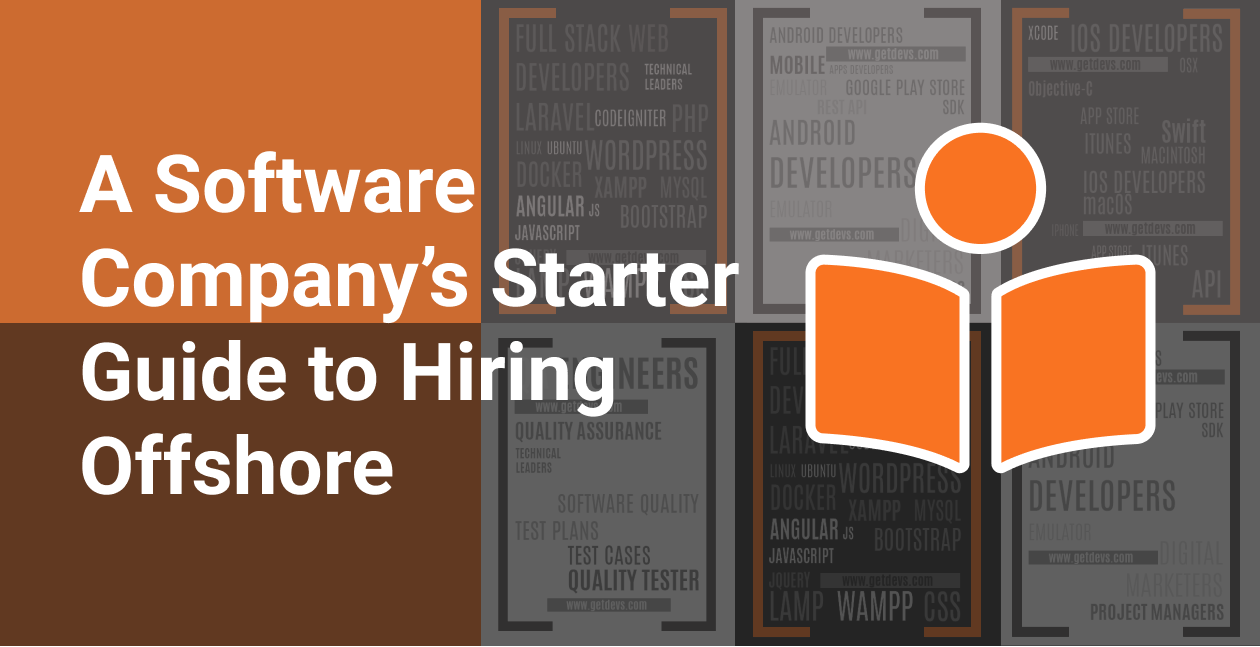Get the ins and outs of the offshore recruitment process—from writing an attractive job posting to executing an on-boarding that will get the best ones to stay on longer.

The benefits of offshore hiring, especially for software companies looking for capable developers, run aplenty. As with any business decision, before you explore the possibility of welcoming team members based remotely in other countries like the Philippines, you need to establish your why.
Once you’re clear on that, and before you find a partner to carry out the task, it pays to understand the how. We break it down below, plus general advice on how to make the most of each step.
Start with a well-written job posting
Many companies make the mistake of copy-pasting job descriptions from the first website they find on Google. They fail to realize that not all open roles, even with similar titles, are meant to be approached the same way. Every company and team have their own goals and needs, and that should be factored into how job descriptions are written.
A job post is essentially a pitch. Developers appreciate a clear, concise, and reasonable statement of the job title, roles and responsibilities, technical and experiential requirements, ways of working (your desired remote setup), perks, and company beliefs. Neither oversell nor undersell expectations, as that only creates workplace confusion for future hires.
Nailing down this first step with the help of your offshore hiring partner will save you lots of time sifting through stacks of resumes from people that don’t fit into your team.
Decide on interview levels and format
The hiring process for developers typically includes 3 to 4 interview levels. It often starts with your offshore partner’s sourcing team, whose main goal is to filter candidates based on career background and general cultural fit. Later in the process candidates may meet with team managers and directors who have a deeper understanding of the technical requirements. In smaller companies, senior leaders can get involved, who may want to know if a candidate’s vision aligns with the company.
Offshore hiring services can either lengthen or shorten this process, depending on how much they know about the industries they’re hiring for.
Not just how many but what kind of interviews matter when looking into offshore recruitment.
For technical roles, there are two that may be most ideal:
Behavioral and case interviews, where a candidate’s analytical skills are assessed through the way they respond or handle certain scenarios. Asking a candidate to talk through their strengths in the context of actual results falls under this format, as well as how they manage stressful moments.
Here, it is less about the correctness of the answer and more about how they think and behave in different situations.
Short coding demonstrations or live exams that place developers on the spot to solve hypothetical problems as the interviewer watches their shared screen. The obvious benefit to this type of interview is that it’ll be very difficult for a candidate to pad their qualifications when you can see first-hand what they can do.
It also gives the candidate an idea of the type of work they’ll deal with should they land the offer. It simulates an actual working scenario, so you both get a feel of what it’s like to do a job together.
Ask revealing questions and give proper feedback

An effective interview is a two-way conversation where both parties remain engaged and interested in the prospect of working together. It’s not an interrogation; in fact, it serves the interviewer more when the candidate is at ease.
When it comes to asking questions, they should be as relevant to the times as they are with the job. With the world united in dealing with a pandemic, getting a candidate to open up about how it’s impacted their living and working situations, their day-to-day process in quarantine, and how they’re preparing for a post-COVID reality can offer better insight into who they are as people than templated questions they’ve probably rehearsed a dozen times.
Always give space for candidates to ask questions. This demonstrates how intentional they were with their decision to interview for the role. You’ll immediately fish out who carefully read through the job description from those who send blind applications to any ad they find.
Make the job offer and get them on board
Once you’ve found the right person for the job, it’s time to strike a deal. Work with your offshore hiring partner to negotiate and draw up a contract that works for you and the candidate.
Get them ready for deployment. Here are some key things that they need to be clear about from the first on-boarding:
- The employee’s point of contact for HR-related matters (offshore hiring partner, their employer by contract) and for work-related matters (software company)
- Workflows and schedules; addressing possible timezone or remote challenges, if any
Notes on cultural nuances can be shared by the working team and will be learned intuitively by the candidate, with guidance from his HR and work managers.
Take-it-or-leave-it tip: Set up a welcome event for the new member of your team, allowing them to feel more integrated and settle into the team culture faster.
In many ways, the offshore recruitment and hiring process does not stray further from a local search. The goal for either is to find the right fit, technically and culturally.
Extending the hunt offshore simply opens you up to more resources that may not be strategically matched where you are. Top software talent is out there. Find them with an offshore hiring partner who understands your industry-specific needs and has a proven track record in compliance.
Get the ball rolling today. Talk to a Get Devs consultant on how you can start hiring top software talent from the Philippines.

